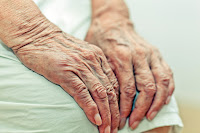
There was a significant drop in the rate of mental health care use among adults with severe mental illness during the first months of the pandemic, according to a report in JAMA Network Open. The findings were based data collected from more than 650,000 Medicare beneficiaries with schizophrenia or bipolar I disorder.
“Among individuals with psychotic disorders specifically, there are reports that the pandemic has been associated with increased symptom acuity,” wrote Alisa Busch, M.D., M.S., of Harvard Medical School and colleagues. “Thus, the decreased utilization we observed across all levels of care is even more concerning … considering the high prevalence of disability (>80%) and poverty (>75%) in this study population.”
Busch and colleagues compared the use of mental health services in the first nine months of 2019 and 2020 by Medicare beneficiaries aged 18 and older who had been diagnosed with schizophrenia disorder or bipolar I disorder. They compared the patients’ rates of mental health outpatient services, emergency department services, hospital admissions, and antipsychotic and mood stabilizer prescription fills in 2019 and 2020.
During the first month of the pandemic, the rates of outpatient services, emergency department services, hospital admissions, and prescription fills dropped by 20.3%, 27.7%, 27.9% and 20.3%, respectively, compared with 2019 levels. These drops occurred despite the robust availability of telemedicine, which accounted for nearly half of all mental health outpatient visits during the first month of the pandemic.
Within six months, the rates of health care use among adults with schizophrenia or bipolar I disorder began to recover. By the end of September 2020, the rate of outpatient visits and prescription fills were only 2.5% and 3.4% lower, respectively, than 2019 levels. Emergency department use and hospital admissions remained 14.1% and 12.4% lower, respectively, indicating a slower recovery.
Further analysis revealed that as the pandemic progressed in 2020, Medicare beneficiaries who were Black, were dually eligible for Medicaid, and/or were disabled had slightly lower odds of receiving outpatient mental health care relative to other groups, the researchers wrote.
“While these differential changes were small in magnitude, they are concerning because they represent incremental worsening of sizable preexisting disparities,” Busch and colleagues wrote. “Future work will be needed to understand the long-term consequences on health outcomes of these disruptions in care and how to address disparities in access to care for patients with severe mental illness.”
To read more about this topic, see the Psychiatric Services article “Experiences of Persons With Serious Mental Illness During the COVID-19 Pandemic.”
(Image: iStock/FatCamera)
Today Is Last Day to Vote in APA’s 2022 Election
Your voice is important in determining the future of APA and your profession. You can vote by using the ballot you were emailed or clicking on “Vote Today” here or on APA’s website. Take time to learn more about this year’s candidates on the same site and view the archived town halls in which candidates responded to key questions. The deadline to cast your vote is tonight—Monday, January 31, at 11:59 p.m. ET.




















